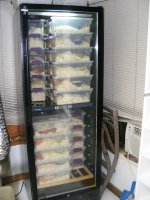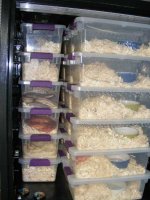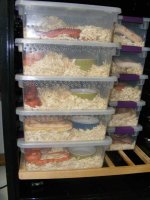greenman
New member
I have a couple snakes I am going to brumate for the first time. I have one concern.
I understand the goal of the brumation is initiate a metabolic shut down and it inspire the breed cycles of the snakes. I don't think I have the resources to cool the snakes down enough. The town i live in get quite cold during the winter so I can't leave the snakes outside. If i take the snakes off the heat pads and leave them near a window but out of sight, the temperature will be around 65.
is 65 to low? If it "isn't" can i do a short brumation? Would it be better?
I want the best chances to have these snakes breed, I have been unsuccessful with not brumating in the past.
Your advice as always, is extremely welcome!
I understand the goal of the brumation is initiate a metabolic shut down and it inspire the breed cycles of the snakes. I don't think I have the resources to cool the snakes down enough. The town i live in get quite cold during the winter so I can't leave the snakes outside. If i take the snakes off the heat pads and leave them near a window but out of sight, the temperature will be around 65.
is 65 to low? If it "isn't" can i do a short brumation? Would it be better?
I want the best chances to have these snakes breed, I have been unsuccessful with not brumating in the past.
Your advice as always, is extremely welcome!



